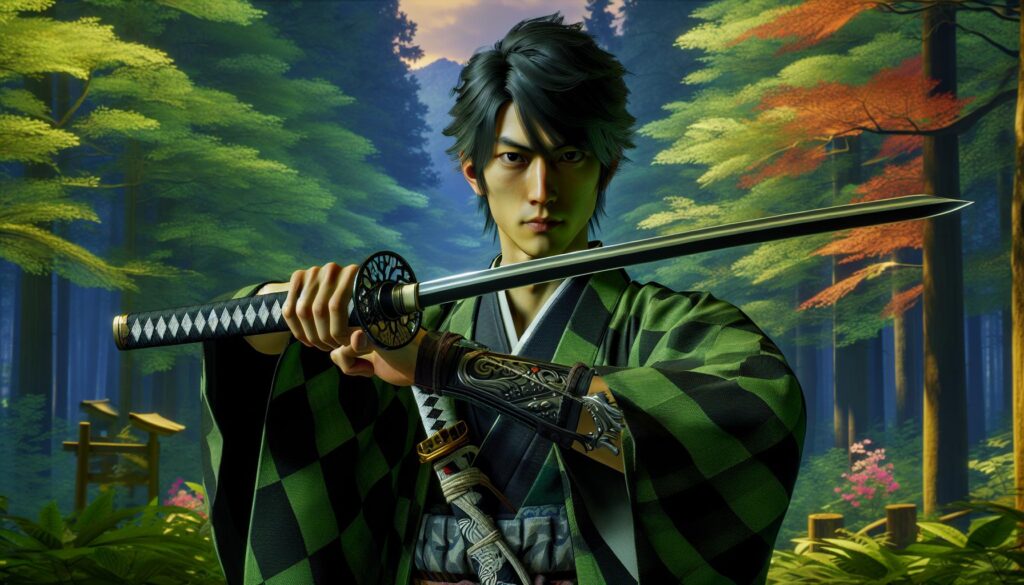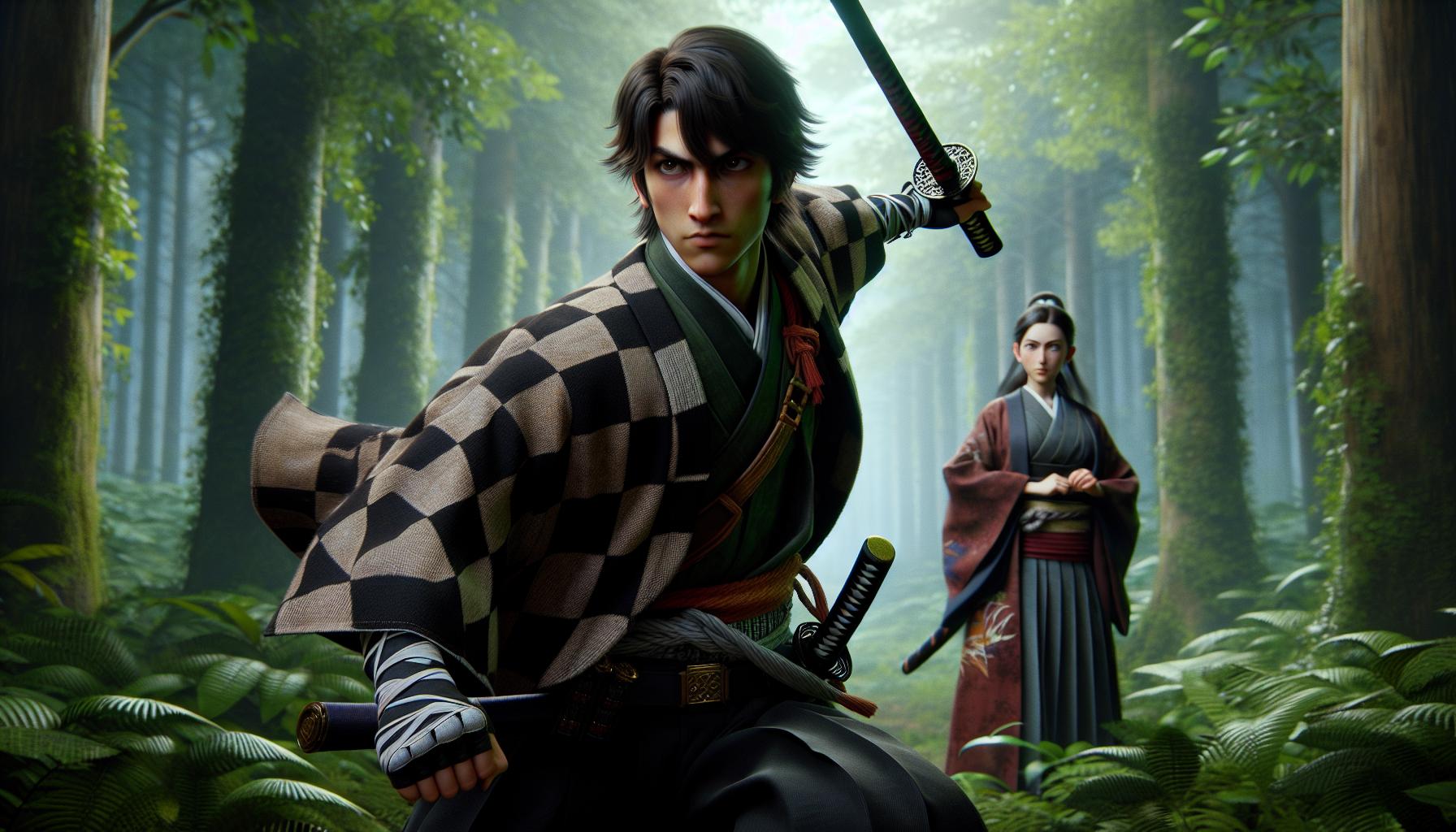
Art:_9i2okxunvi= Demon Slayer has taken the anime world by storm, captivating fans with its stunning visuals and gripping storyline. As I dive into the art of this phenomenon, I can’t help but appreciate the intricate designs and vibrant colors that bring each character to life. The animation style not only enhances the narrative but also creates an emotional connection that resonates with viewers.
In this article, I’ll explore the artistic elements that make Demon Slayer a visual masterpiece. From the breathtaking landscapes to the meticulously crafted fight scenes, every detail plays a crucial role in shaping the series’ identity. Join me as I unravel the artistry behind this beloved anime and discover what makes it stand out in a sea of animated works.
Key Takeaways
- Visual Mastery: “Demon Slayer” is renowned for its exceptional animation quality, featuring intricate character designs and breathtaking landscapes that enhance storytelling and viewer immersion.
- Character Depth: The series showcases rich character development, with poignant journeys for the main characters, such as Tanjiro and Nezuko, which deepen audience connections and understanding.
- Engaging Storyline: A compelling plot progression combines action with emotional moments, revealing each character’s backstory while propelling Tanjiro’s quest for vengeance and redemption forward.
- Themes of Resilience: Central themes, such as familial bonds, perseverance, and the fight between good and evil, resonate deeply with viewers, inspiring them through the characters’ struggles.
- Cultural Impact: “Demon Slayer” has made a significant mark on the anime landscape, influencing various industries and cultivating a passionate fanbase, solidifying its status as a modern classic.
- Symbolic Elements: The series employs symbolism, including colors and breathing techniques, to convey complex emotional and narrative themes, adding depth to the viewer’s experience.
Art:_9i2okxunvi= Demon Slayer
Art:_9i2okxunvi= Demon Slayer stands out due to its unparalleled animation quality and artistic direction. The character designs feature intricate details, bringing to life a diverse cast. Each character’s expression captures their emotions, allowing viewers to forge deep connections.
The animation techniques utilize vivid colors that enhance the atmosphere. Backgrounds showcase breathtaking landscapes, from lush forests to serene temples. Each setting immerses viewers in the world, making every scene visually captivating.
Fight scenes in “Demon Slayer” are particularly noteworthy. The choreography combines fluid movement with dynamic camera angles, adding intensity to battles. Special effects, such as the unique breathing techniques and elemental attacks, add depth to the action sequences.
The show employs a blend of traditional art styles and modern animation technology. This fusion creates a unique aesthetic, setting “Demon Slayer” apart from other anime. Ultimately, the artistic elements contribute significantly to its acclaim, making it a visual masterpiece.
Visual Style and Animation Techniques
“Demon Slayer” stands out due to its exceptional visual style and innovative animation techniques. The artwork captivates viewers and elevates the storytelling experience markedly.
Character Design
Character design in “Demon Slayer” showcases intricate detail and distinct aesthetics. Each character boasts a unique color palette and wardrobe, reflecting their personality and backstory. For instance, Tanjiro’s signature green and black checkered kimono symbolizes his resilience and determination. Additionally, the facial expressions express complex emotions, allowing viewers to connect deeply with their journeys. The fluidity of character movements enhances action sequences, making battles visually stunning and emotionally engaging.
Background Art and Environments
Background art and environments play a crucial role in art:_9i2okxunvi= Demon Slayer immersive world. The series features meticulously drawn landscapes, from vibrant forests to tranquil temples, each meticulously crafted to set the mood. The use of color gradients adds depth, enhancing visual intrigue. Natural elements, like flowing water and rustling leaves, contribute to the atmosphere, grounding the narrative in a tangible setting. This attention to detail creates a rich backdrop that elevates the overall aesthetic of the anime, making it visually striking and memorable.
Storyline and Character Development
“Demon Slayer” features a captivating storyline paired with rich character development that elevates its appeal. The series explores themes of family, perseverance, and the struggle against evil, with each character contributing to the emotional depth of the narrative.
Main Characters
- Tanjiro Kamado: The protagonist, Tanjiro, displays unwavering determination and compassion. His journey begins with the tragic loss of his family to demons, igniting his quest for revenge and redemption. His character evolves, balancing his responsibilities as a demon slayer with empathy for both humans and demons.
- Nezuko Kamado: Tanjiro’s younger sister, Nezuko, transforms into a demon yet retains her human emotions. Her character symbolizes the conflict between humanity and monstrosity. Nezuko’s protective nature and loyalty to Tanjiro highlight the importance of familial bonds.
- Zenitsu Agatsuma: A fellow demon slayer, Zenitsu’s character rushes between cowardice and bravery. His development reflects the triumph of inner strength, especially when he fights ferociously in moments of unconsciousness. This contrast adds humor while enhancing his role in the story.
- Inosuke Hashibira: Known for his boar mask, Inosuke exhibits aggressive energy and a fierce fighting style. His development shows growth from a lone wolf to a dependable ally. His wild nature brings excitement and comedy to the group dynamics.
Plot Progression
The storyline progresses through Tanjiro’s mission to avenge his family and find a cure for Nezuko. Each arc introduces formidable enemies, including powerful demons and the Twelve Kizuki, deepening the conflict. The narrative skillfully balances action with character backstories, providing depth to adversaries while highlighting their motivations.
The pacing of the story enhances engagement, with gripping battles interspersed with heartfelt moments. The introduction of Hashira, the elite demon slayers, adds layers to the narrative, amplifying the stakes. As Tanjiro and his friends grow stronger, their relationships deepen, underscoring the theme of camaraderie amid adversity.
Overall, the storyline and character development in “Demon Slayer” intertwine seamlessly, creating a compelling experience that keeps viewers invested from start to finish.
Themes and Symbolism
Art:_9i2okxunvi= Demon Slayer is rich with themes and symbolism that enhance its narrative depth. The series explores family bonds, highlighting Tanjiro’s dedication to his family, particularly his relationship with Nezuko. Their struggles against demons symbolize the enduring power of familial love even in tragic circumstances.
Perseverance stands out as a key theme throughout the series. Tanjiro’s relentless pursuit of strength showcases resilience in the face of overwhelming odds. This theme resonates with viewers, inspiring them to confront their own challenges.
The conflict between humanity and monstrosity presents itself through various characters. Nezuko embodies this struggle as a demon, navigating her duality while retaining her humanity. Her journey invites viewers to reflect on the complexities of good and evil.
Camaraderie plays a significant role in “Demon Slayer.” Tanjiro’s friendships with Zenitsu and Inosuke represent the importance of teamwork. Their development as characters emphasizes loyalty and support during battles, reinforcing the idea that strength is amplified through unity.
Symbolic elements further enrich the series. The use of color in character design conveys underlying traits and emotions. For example, Tanjiro’s green and black kimono symbolizes his tenacity and connection to nature. The distinct breathing techniques utilized by characters also serve symbolic purposes, representing their unique fighting styles and personal growth.
Additionally, the backdrop of the Taisho period adds historical depth. The series immerses viewers in this era, blending traditional culture with supernatural elements. This historical context enhances the narrative, allowing for a more profound connection to the characters’ struggles and triumphs.
Overall, the themes and symbolism in “Demon Slayer” create a multi-layered narrative. By weaving together family relationships, individual perseverance, camaraderie, and historical context, the series resonates with audiences while providing a thought-provoking viewing experience.
Reception and Impact
“Demon Slayer” received widespread acclaim upon its release, quickly establishing itself as a formidable presence in the anime industry. The series garnered numerous awards, including the prestigious Tokyo Anime Award Festival’s Animation of the Year. Its success fueled a surge in merchandise, from figurines to clothing, making it a major commercial powerhouse.
I’ve noticed that critical reception emphasizes the exceptional animation quality and character development. Reviewers from sources like IGN and MyAnimeList praise the series for its ability to blend emotional storytelling with breathtaking visuals. Both fans and critics highlight Tanjiro’s journey, resonating with viewers for its portrayal of perseverance and familial bonds.
Social media platforms have played a pivotal role in amplifying “Demon Slayer’s” impact. Trending hashtags and fan art distributions have created a vibrant community, sparking discussions and fan theories. This engagement has led to increased viewership and fueled interest in related media, such as the feature film “Demon Slayer: Mugen Train,” which broke box office records in Japan.
The show’s influence extends beyond entertainment, prompting collaborations in fields like fashion, gaming, and live events. Numerous video games have emerged, allowing fans to play as their favorite characters while experiencing the story from a new perspective. Additionally, the series has inspired live-action adaptations, showcasing its wide-reaching effect on popular culture.
Culturally, “Demon Slayer” bridges generations, appealing to both longtime anime fans and newcomers alike. Its themes resonate widely, sparking conversations about resilience in the face of adversity. The series’ ability to evoke such strong emotional responses has secured its status as a modern classic in anime history.
Anime Landscape
Art:_9i2okxunvi= Demon Slayer stands as a remarkable achievement in the anime landscape. Its stunning visuals and emotional storytelling create an unforgettable experience that resonates with viewers. I appreciate how the intricate character designs and vibrant colors not only enhance the narrative but also allow for deep emotional connections.
The series’ themes of family, perseverance, and the struggle against evil invite us to reflect on our own lives. With its rich symbolism and engaging character arcs, “Demon Slayer” has truly set a new standard in anime. I’m excited to see how this beloved series continues to evolve and inspire future generations of fans.













